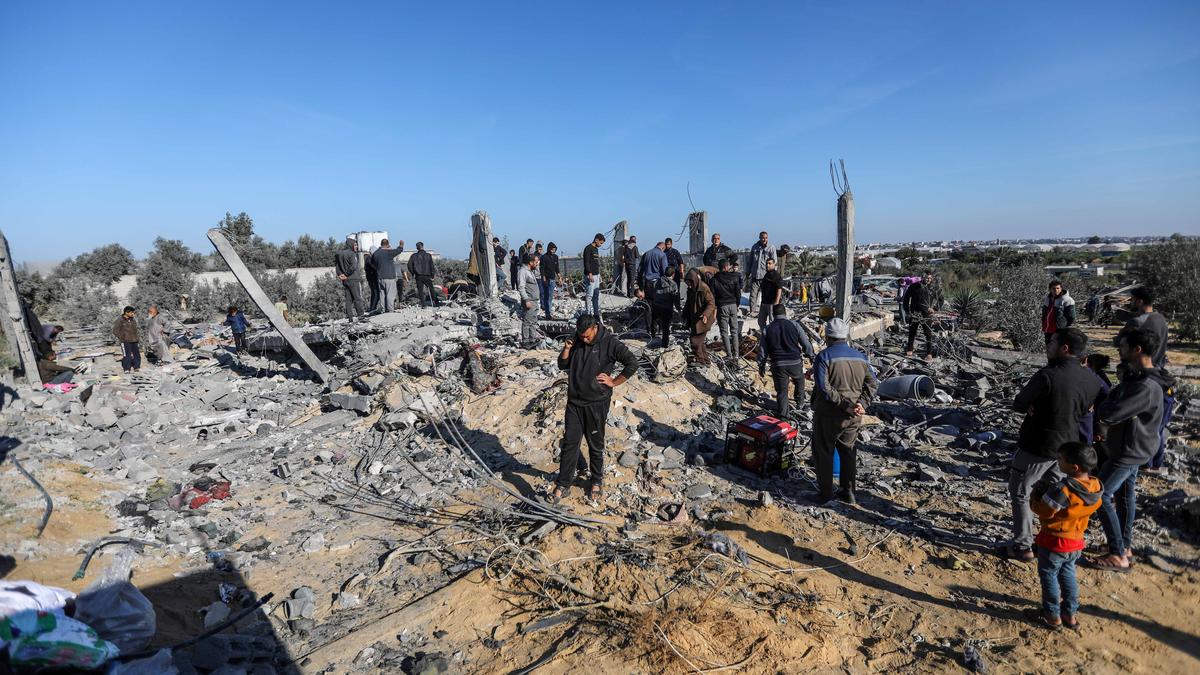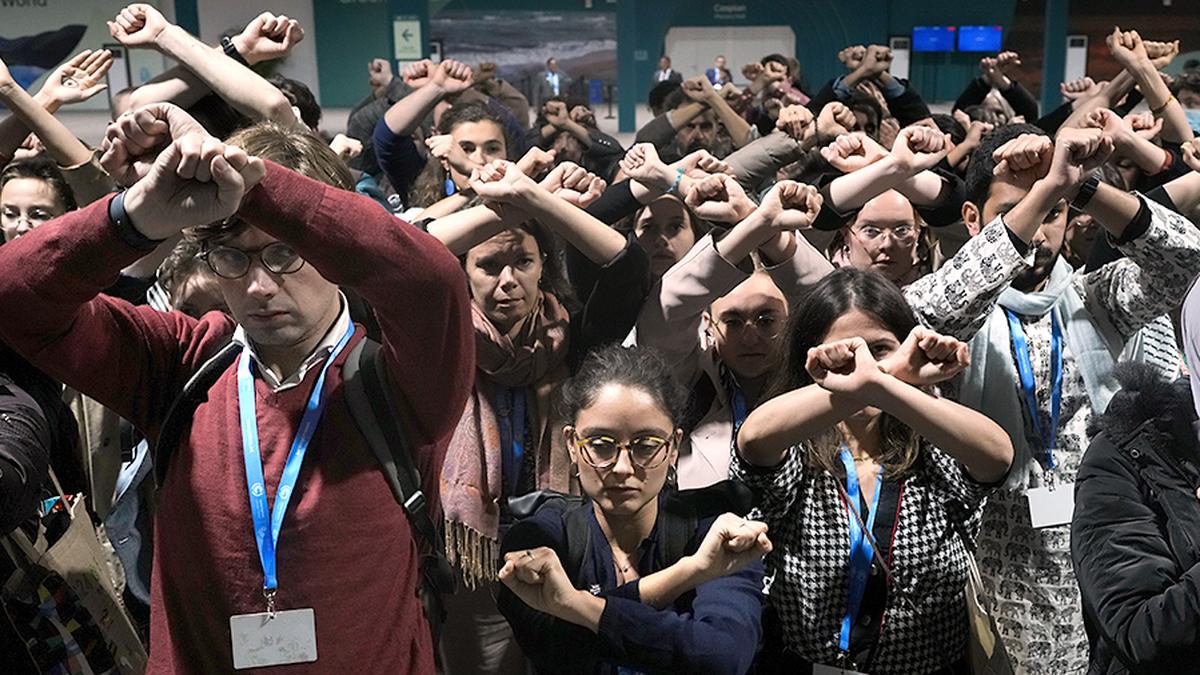(This article is part of the View From India newsletter curated by The Hindu’s foreign affairs experts. To get the newsletter in your inbox every Monday, subscribe here.)
A year ago, this day, Hamas launched an unprecedented cross border attack in Israel from Gaza. At least 1,200 people were killed and 250 taken hostage. Israel immediately launched a retaliatory war. A year later, the Hamas attack and the Israeli invasion of Gaza have taken West Asia to a wider, deeper and more deadlier regional conflict with more actors. Before the Hamas attack, the region appeared to be on a different course. In 2020, four Arab countries reached normalisation agreements with Israel. Saudi Arabia and Israel were in an advanced stage of normalising ties. The U.S., which was brokering the Saudi-Israel talks, proposed an ambitious infrastructure project aimed at connecting India with Europe through the Persian Gulf, Jordan and Israel. This led to Jake Sullivan, the U.S. National Security Adviser, saying that “the Middle East is quieter than it has been in decades”. But now, as I write in this oped in today’s The Hindu, West Asia (Middle East) is deadlier than it has been for decades.
The war has changed the region in many ways. It ended the regional status quo where the Palestine question was pushed to a corner. World powers had given up on finding a solution to the Palestine question. Israel continued its violent military occupation of the West Bank and the blockade of Gaza. The attack brought the Palestine issue to the fore of West Asia’s geopolitics. The violence that followed the Hamas attack emboldened the old argument that peace and stability could not be established in West Asia as long as the Palestine question remains unresolved.
The war has also put a brake on the Israel-Arab normalisation process. If Saudi Arabia was in an advanced stage of normalising ties with Israel in September 2023, today, the Kingdom says normalisation is not possible without a clear path towards the creation of a Palestinian state “based on the 1967 border and East Jerusalem as its capital”. This doesn’t mean that Arab-Israeli ties would move to enmity. Arab countries have voiced concerns and criticisms about Israel’s war on Gaza, but have stopped short of taking any hard policy decisions that would antagonise Israel. For example, all Arab-Israel peace agreements, except the normalisation deal with Sudan, a country which is at war with itself, are still standing. But there are impediments in taking the relationship to the next level or formalising ties between Saudi Arabia and Israel, given the anger towards Israel on the Arab street.
While Hamas re-regionalised the Palestine issue and scuttled the Saudi-Israeli normalisation, it had to pay a heavy price for its murderous attack in Israel. The retaliatory war Israel launched on Gaza has turned the enclave, sandwiched between the Mediterranean Sea and Israel proper, more or less uninhabitable. Israeli troops have killed nearly 42,000 Palestinians in 12 months, a vast majority of them women and children. Nearly 100,000 Palestinians were wounded, while almost the entire population of Gaza (2.3 million) have been displaced. Israel has also stepped up its attacks in the West Bank. It carried out multiple raids in Jenin and launched an airstrike in Tulkaram. Global calls for a ceasefire were ignored. Palestinians see no end to the war and continue to pay a heavy price.
But the war also exposed the security vulnerabilities of the state of Israel, despite the aggressive face it is putting up in the region. The Hamas attack itself was a huge intelligence and security failure. Israel was caught off guard when Hamas militants strode into the border and started attacking communes and security sites. And when Israel went into Gaza, it said it wanted to destroy Hamas and secure the release of the hostages. Gaza laid to siege by Israeli troops, which controls even the flow of food aid trucks into the enclave. But a year later, Israel is yet to defeat Hamas, let alone destroying it. More than 100 hostages are still in Hamas’s captivity. The war on Gaza led to Hezbollah opening “a support front”, firing rockets into northern Israel, “in solidarity with the Palestinians”. Both Hamas and Hezbollah are backed by Iran. Israel took the war to Iran by bombing the Iranian embassy in Damascus. Iran retaliated with ballistic and cruise missiles.
Today, Israel is fighting a multi-front war. It continues to fight in Gaza where Hamas is resurfacing in areas which Israel once said were cleared of the militants. In Lebanon, it dramatically escalated the war on Hezbollah, by killing its leader, Hassan Nasrallah, and launching an invasion—its fourth invasion of the country. And Israel is preparing to hit Iran in retaliation for the October 1 Iranian ballistic missiles attack on Israel. West Asia is at an inflection point. Israel is fighting a multi-layered conflict. It is yet to win the war in Gaza. It has launched an invasion of Lebanon. And a regional crisis is unfolding with Iran. What Israel is trying to do is to establish escalation dominance, like it did in 1967, and neutralise its enemies using great fire power. However, unlike in 1967, Israel’s enemies include a host of non-state actors. It is to be seen whether Israel’s scorched earth tactics and its escalation strategy would provide the Jewish country the long-term security it seeks or trap it in a conflict loop.
The Top Five
1. The ‘Axis of Resistance’: Iran’s forward defence network
From Hamas to Hezbollah and Houthis to Hashad, the Islamic Republic has built strong links with a wide network of non-state militias in West Asia, which are now at the centre of the unfolding regional conflict with Israel, writes Stanly Johny.
2. What’s behind Israel’s ban on the UN chief? | Explained
Has a UN chief ever been banned by a member state? What has been the response to the move? Writes Suhasini Haidar.
3. In Gaza, it is a battle for survival
Essential supplies, such as oxygen concentrators, surgical equipment, and generators, have been delayed or blocked by Israeli authorities repeatedly, writes Farhat Mantoo.
4. Abortion or immigration? A contest to frame the contest
The two principal contestants for the presidential election are trying to frame the election – Harris wants to appear tougher than she has been on the issue of illegal immigration and Trump wants to appear softer than he used to be on the question of abortion, writes Varghese K. George.
5. The status of the civil war in Sudan | Explained
What is the extent of the war? Where did the conflict between the Sudanese Armed Forces and Rapid Support Forces begin? How have ethnic tensions and rivalries played a part in the war? From where are conflicting parties sourcing their weapons and arms? writes Anu Maria Joseph.
Please share your feedback with us at: viewfromIndia@thehindu.co.in
Published – October 07, 2024 03:59 pm IST




